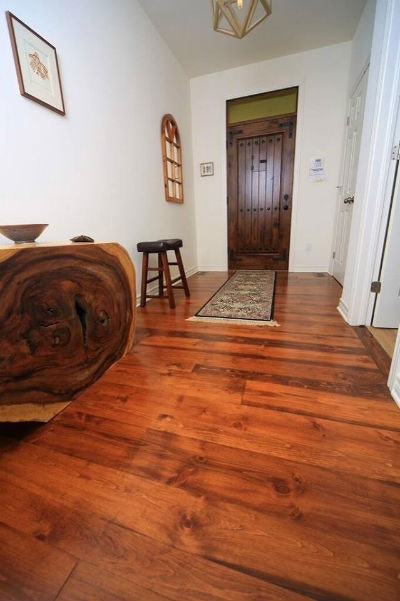

Hand-hewn beams from square- and round-cut trees moved through the Ottawa Valley starting in the early 1800s and ending only 50 years ago. More than 14 billion logs—old-growth pine, maple and birch—floated down the Ottawa River during this time, destined for English tall ships docked in Quebec City.
Many of the logs sank. The cool water depths of the river preserved the hulking logs for a century or more.
Then, in the 1990s, an electrician named Gord Black with a flare for history and a will to generate jobs in his Ottawa Valley hometown of Shawville, Quebec, used historical archives and maps to determine where the logs were most likely to have sank. He located the old mills, chutes and fast water routes along the river and dived down with scuba gear.

The bounty of logs at the bottom, some over 25 feet long and 25 inches in diameter, became the inventory of a new business—Logs End, makers of wide-plank fooring and other wood products.
Logs End sends a team of scuba divers into the river to rope each log individually. The logs are surfaced and taken to the manufacturing plant in Shawville, where they’re milled before they’re shipped to Log End’s 4,500-square-foot showroom in Ottawa.
The wood is 25 percent more dense than new material, says Rob Black, Gord’s son and vice president of marketing and sales at Logs End, because it’s primarily from virgin forests cut down between 1880 and 1920. The wood has very tight growth rings.
The logs lost their sap and resin after being submerged for a century, so the wide plank flooring that Logs End sells does not move much between seasons, Black said.
“And the color is beautiful,” he said. For more information, visit Logs End’s website.






















